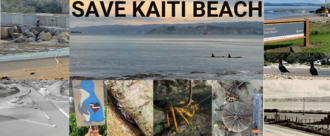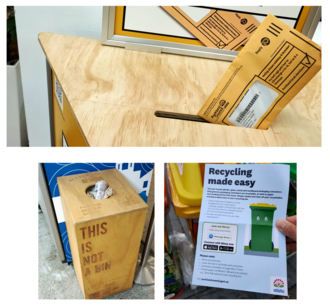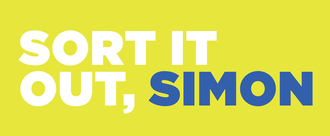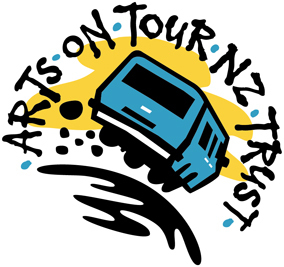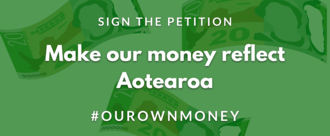-
Keep half-price fares for everyone, for good!New Zealand should be a place where everyone can afford public transport to stay connected, enjoy our regions, and travel in a way that’s kind to the environment. In April 2022 the government halved fares, and that has helped people use public transport more often, creating habits of using cleaner travel instead of private cars. But in January 2023, the government will END half-price public transport, returning fares to full price for everyone except people with a Community Services Card. Higher fares will force some people to break public transport habits and return to traveling by private car, causing congestion and harmful carbon emissions. Higher fares will force some people to travel less, and their wellbeing and communities will suffer as a result. The solution is for the government to keep fares half price, for everyone, for GOOD! Extending half-price fares for everyone will: ***Reduce emissions by locking in new public transport habits ***Give more people a chance to switch to affordable public transport ***Reduce hardship in a time of high living costs ***Ensure no one misses out because they have not acquired a Community Services Card. It makes sense for the government to keep fares half price, for good. Since April 2022, people across Aotearoa have seen the benefits for their communities and the climate, while the policy of halving public transport fares for everyone has been extremely cheap. In fact, the cost of half-price public transport for three months is between $25 and 40 million, compared with nearly $600 million spent on the fuel excise cut! While they’re at it, the government should also make fares FREE for low-income groups and under-25s. Free public transport for full- and part-time tertiary students, Community Services Card holders, and Total Mobility Card holders and their support people will reduce hardship and help these groups use clean transport to get where they need to go. Free fares for under-25s will embed low-carbon transport habits among the next generation and remove stigma by showing that public transport is for everyone. In a climate emergency, we need the government to use every lever it has to reduce carbon emissions; we cannot afford to let high fares be a barrier that prevents people from switching out of private cars. In a cost of living crisis, households need support. Making public transport affordable is a no-brainer. Minister of Transport Michael Wood: Keep fares half price for everyone, for good, and FREE for those who need it most!8,940 of 9,000 SignaturesCreated by Free Fares Campaign

-
Ban Lead From Kids’ ProductsThere is NO SAFE LEVEL of lead exposure, and we think children's items should be 100% safe from this risk. Gaps in our legislative and regulatory regime allow toxic lead in many children’s items. It’s time we overhaul our outdated piecemeal laws and standards and, at a minimum, adopt the most stringent international standards on lead in children’s products. Our kids deserve the best protections too. Lead exposure, even at low levels, can set children up for a lifetime of struggle. It can reduce IQ and cause speech delays, behavioural issues, impulsivity, aggression, ADHD and learning difficulties. It's linked to increased school dropouts, criminal activity and reduced earnings as an adult. In addition to brain damage, it also affects every organ system and can cause heart disease, kidney disease, cancer and is a contributing factor in most major health issues. Children are the most vulnerable to these effects due to their smaller size and still-developing brains. This year, some NUK baby bottles were recalled in the USA and Canada due to lead paint on the surface of the bottle. They were not recalled in New Zealand because lead paint on baby bottles is not illegal here. This is unacceptable. Also this year, Lead Awareness NZ coordinated a crowd-sourcing initiative where whanau across the country tested and found high lead levels on the surface of their mugs and glasses, including an alarming number of items clearly designed for children. Some of these are currently for sale in stores. This is unacceptable. A Canadian environmental group has recently reported on the loopholes in their laws that allow high levels of lead inside toys' interior parts. We have the same loopholes in our laws. This is unacceptable. Studies worldwide have found high levels of lead in painted playground equipment and play surfaces. We can’t find any laws limiting lead content in New Zealand playgrounds. This is unacceptable. Australia recently joined the international movement promoted by the WHO to phase out lead from ALL paints, defined as allowing no more than 90 parts per million (ppm) lead. Although New Zealand limits lead in children’s paints and toys to this level, we still allow up to 1000 ppm lead in general use paints and we allow the sale of marine paints containing 800,000 ppm lead. While such general and marine paints aren’t technically children’s items, children live and play in painted environments and are vulnerable to harm from them. This is unacceptable. New Zealand needs to do a better job of protecting children from lead, and we think children's products are a good place to start. Our legal controls are outdated and piecemeal, and unlike our international counterparts we don’t even monitor our young children for their lead exposure levels. There is much to be done in this area, but we need to start somewhere. Let's allow our children to reach their full potential. Let's start by ensuring their products are safe for them. Resources - 2009 New Zealand Unsafe Goods Notice regarding lead in children’s toys (current): https://gazette.govt.nz/notice/id/2009-go2660 (Limits the levels of lead that can “migrate” from a toy surface to 90 mg/kg. It’s understood this was based on the EU Toy Safety law from 1988. However, European lead limits have been updated twice since that time, with the current standard limiting lead migration to between 0.5 mg/kg and 23 mg/kg (depending on toy material). The US and Canada take a different approach and limit the total lead content of toys and children’s products, rather than migratable lead, to 90 mg/kg or 100 mg/kg lead in accessible parts (strictly defined), and a total concentration limit of 90 mg/kg for any surface coatings. New Zealand law has fallen behind. It is time for New Zealand to become a world leader by ensuring that our children’s toys and products are completely lead free.) - ESR Report: Health Risk Assessment: Lead In Children’s Toys, May 2021 https://www.esr.cri.nz/assets/FW21014-Lead-in-Toys-FINAL-30-June-2021.pdf?fbclid=IwAR1uUKegI1pDssl4LQy1dJR_fIHjuFWp6NrrN5buS6Qa-Vm4ceqcOUio_H8 - Summary by Lead Awareness NZ on New Zealand’s ceramics standards https://leadawarenz.blogspot.com/2022/08/regulations-on-leachable-lead-in.html - NUK baby bottle recall Leadsafe Mama summary: https://tamararubin.com/2022/07/july-28-2022-the-cpsc-finally-issued-a-recall-for-the-lead-painted-baby-bottles-that-we-reported-in-june-of-2021-but-they-only-recalled-one-of-at-least-six-lead-painted-designs-from-nuk/ United States recall: https://www.cpsc.gov/Recalls/2022/First-Choice-Glass-Baby-Bottles-Recalled-by-NUK-Due-to-Violation-of-the-Federal-Lead-Content-Ban-Sold-Exclusively-on-Amazon-com-Recall-Alert Canada recall: https://recalls-rappels.canada.ca/en/alert-recall/nuk-first-choice-glass-baby-bottles-recalled-due-lead-excess-allowable-limit - Report by Environmental Defence Canada https://environmentaldefence.ca/report/passing-the-buck/ - Studies on playgrounds UK: https://www.plymouth.ac.uk/news/playground-paints-should-be-closely-monitored-to-reduce-potential-danger-to-public-health US: https://www.cpsc.gov/Newsroom/News-Releases/1996/CPSC-Finds-Lead-Poisoning-Hazard-for-Young-Children-on-Public-Playground-Equipment South Africa: https://pubmed.ncbi.nlm.nih.gov/20218484/ Israel: https://pubmed.ncbi.nlm.nih.gov/29754080/ - Australian Poisons Standard https://www.legislation.gov.au/Details/F2022L01257 (Part 2, Section 7.1(2)(b) of the Poisons Standard provides that paints and tinters (other than anti-fouling or anti-corrosive paints) must meet a 90 ppm limit for lead. In addition, it is understood that anti-fouling and anti-corrosive paints (which currently have a 1000 ppm limit for lead) will be required to meet the 90 ppm limit by October 2023) - Lead Awareness NZ www.facebook.com/leadawarenessnz590 of 600 SignaturesCreated by Ananda Card
-
Make Tertiary Education Free and AccessibleWHY A DEBT FREE FUTURE? Fulfilling these asks and a Debt Free Future is possible, in fact we’ve achieved it before – because education is a public good. Our country has a rich history of free tertiary education, for 121 years, until it was taken away in 1990. After lobbying from students and supporters across the motu, in 2017 we secured a promise of 3 years Fees Free from the Labour Party; but in 2020 the Government broke its promise to extend the policy and took this opportunity, this right, from learners. HOW CAN YOU HELP? We have the power to bring free and accessible education back, and we need your support. Sign and share this petition to be part of the movement fighting for a Debt Free Future. This is about people, community and doing what’s right.1,568 of 2,000 SignaturesCreated by VUWSA President
-
Save Kaiti Beach; PROTECT our History and BiodiversityEastland Port is planning to carry out substantial construction work to expand their port in Tūranga-nui-a-Kiwa Gisborne. This includes further reclamation of reef and ocean space near the river mouth and more dredging with disposal of materials to the off shore disposal ground located within the bay.(1) These proposed works would create further loss of habitat for taonga species, fail to respect significant cultural values and will distort a precious historical site of Aotearoa New Zealand. The species currently occupying this area are Kororā (little blue penguin), Toreā (oystercatcher), Taranui (caspian tern), Matuku Moana (white faced heron), Kāruhiruhi (pied shag), Kawaupaka (little shag), Tākapu (gannet), Karoro (black backed gull), Kōtare (kingfisher), Kekeno (fur seal), Whai (stingray), Kōura (crayfish), Kākahi (fresh water mussel), Pāpaka nui (purple rock crab), Kina (sea urchin), Manaia (seahorse) to name a few. Orca whales also feed from the reef with their young at certain times of the year. Previous construction work by Eastland Port destroyed an estimated 35 to 70 kororā (little blue penguin) nests during the breeding season in 2021. The habitat was located within the rock wall where the port carried out demolition and reclamation.(2) The consent granted to Eastland Port was a Limited notification which didn't allow for Public Submissions. The site of the proposed works is described as nationally and internationally significant to our country. A natural reef formation used by ancestors of Māori as a landing point dating back many centuries ago. The landing entrance later saw an arrival of Europeans. Kaiti Beach represents a significant historical site used by both our Māori and Pākehā ancestors. In the words of Dame Anne Salmond: “The foreshore of the Tūranaganui River is one of the world’s great voyaging sites. It is the landing place of the Horouta canoe, celebrating the achievements of the Polynesian star navigators. It is the place where Captain James Cook and his companions first came ashore in New Zealand, heralding the traditions of European exploration and discovery. It is the site where Tupaia, the Ra’iatean high priest navigator who sailed with Cook, first met Māori, marking the links between local people and their ancestral homelands. It is a meeting place of cultures, of challenges and shootings, as well as friendly exchanges. Here Captain Cook and a local man saluted each other with a hongi on Te Toka-a-Taiau, the first greeting between a Māori and a European. It is a sacred site for all New Zealanders, to be celebrated with pride and treated with dignity."(3) In the words of Sir Derek Lardelli: Te Toka-a-Taiau, the rock of Taiau, Te Pito o Te Ao, is the core of our universe, a Tairawhiti perspective Ko Te Toka-a-Taiau, Te herenga o ngā wai mai te hononga o ngā rua Te Toka-a-Taiau is the spiritual gathering place of our ancestors Ko Te Toka-a-Taiau, Te whakatinanatanga o te whakapapa We are the kaitiaki guardians of this very sacred site and Te Toka-a-Taiau is the physical reminder of our commitment to the land, the people and our environment Ko Te Toka-a-Taiau he mauri tipua Te Toka-a-Taiau is the spiritual essence of our ancestors Ko te Toka-a-Taiau he mauri tawhito Te Toka-a-Taiau is a spiritual essence from ancient times He mauri no te kukunetanga mai i Hawaiki The spiritual essence from the origins of time and the spiritual homeland of Hawaiki Mauritū nei hei ahurewa tapu That stands as a sacred alter Mauritū nei hei tūāhu tapu That stands as the launching pad of our destiny"(3) We believe all people of Aotearoa New Zealand would consider this a significant piece of history and we need to protect the area from further disruption and modification. We ask you to join us in saying “Enough!” to Eastland Port and Gisborne District Council. Join us in calling for the protection of this natural environment, a life source, a habitat of taonga species, a significant piece of history connecting each of us to our identity. We must protect it for future generations so they can connect to their history. This is our chance Aotearoa New Zealand, let's stand together, side by side to give this area the respect and dignity it deserves. Let it be your time in history to help shape this moment and move us all forward in an ethical direction to let the healing begin. Thank you for your time and consideration in signing this petition. This petition will be used as evidence for public support to deny the consent application submitted by Eastland Port. References: 1. https://www.gdc.govt.nz/consents-and-licenses/notified-consents/notified-consents/Eastland-port-limited 2. Recommendations for penguin management for the Waikahua seawall project at Eastland Port (December 2021). Dr. John Cockrem. https://www.gisborneherald.co.nz/frontpage-featured/20211223/seawall-deadly-for-korora/ 3. The Tūranganui River; A Brief History (October 2006). Michael Spedding. Articles: https://www.stuff.co.nz/national/126798579/little-penguins-left-dead-injured-and-homeless-after-seawall-rebuild-in-gisborne https://www.gisborneherald.co.nz/frontpage-featured/20211022/penguin-alert-locals-urged-to-keep-an-eye-out-after-korora-little-blue-pen/ https://www.gisborneherald.co.nz/local-news/20211027/call-hotline-first-regarding-wildlife-concerns-or-findings-department-of-c/ https://www.gisborneherald.co.nz/local-news/20211028/port-stops-work-pending-search-for-penguin-nests/ https://www.gisborneherald.co.nz/frontpage-featured/20211202/rallying-for-korora/ https://www.gisborneherald.co.nz/frontpage-featured/20211223/seawall-deadly-for-korora/ https://www.gisborneherald.co.nz/frontpage-featured/20220108/penguin-safety-fears/ https://www.gisborneherald.co.nz/frontpage-featured/local-news/editors-pick/20220603/taking-care-of-penguin-business/152 of 200 SignaturesCreated by Waikahua Kororā Kohanga Group .
-
Stop "wasted" votes influencing Auckland's future - change to the Single Transferable Vote systemOur Auckland local elections currently use the First Past the Post (FPP) voting system. If the candidate we vote for doesn't make the threshold, our votes are "wasted". There is a modern alternative. The Single Transferable Vote (STV) system will allow us the freedom of choice to rank our candidates and recycle our "wasted" votes. When our votes are guaranteed to count like this, it shows more respect to our individual sovereignty and needs, rather than forcing us to vote under the duress of the fear of "wasted" votes "vote-splitting". At least 1,863 voters wasted their vote when they voted for me in the Waitematā Local Board elections this year, under the current voting system (FPP). My favorite local board candidate would have been voted in if those 1,863 "wasted" votes would have been recycled under STV for him. I didn't know such an awesome fellow was running until I was already nominated, and I continued to run partly because there was a possibility that we could both be elected, and partly so I could speak up and illustrate with a poignant lived experience that the ability to recycle votes does matter in practice and not just in theory. Under FPP, neither of us two made the voting threshold. We wasted at least 9,139 votes - that's 10,000 people who spent at least an hour on this, 10,000 total work-hours of people doing their civic duty, wasted.... That's a problem for all FPP democracies, but there is a local solution already ready for us if you want to choose it! Under Section 29[1] and 30[2] of the Local Electoral Act 2001, if I present Auckland Council with signatures with names and addresses of 5% of all Auckland enrolled voters, then they are forced by central government legislation to hold a vote on changing our voting system to, say, STV. STV doesn't have wasted votes like our current one. Other more progressive cities in New Zealand[3], such as Palmerston North, which I'm proud to originate from, have already had and passed voting system referendums to switch to STV, because it allows better representation and limits the possibility of duopoly party voting blocs just aiming to do the bare minimum to capture the middle vote and play to fears of "wasted" votes. STV allows voters to vote with truth in their hearts for what they truly believe is their best choice, safe in the knowledge that that vote will be reused and recycled towards their other choices if it is "wasted". This respects individual sovereignty better than FPP, because voters are less able to be manipulated by fears of vote-wasting. I would like to bring the wider choices that the residents of these other areas enjoy in their voting system, to Auckland. If you can help me with this, then please sign this petition with your name and electoral enrolment address in the Auckland region. I will not use your name or address for any other purpose other than Section 29 of the Local Electoral Act 2001. It is illegal under New Zealand law (the Privacy Act) for me to do anything else with your personal information except this. So please vote, for better voting! Ngā mihi, Andi Liu / 刘安迪 2022 Waitematā Local Board candidate and Waitematā and Gulf Ward candidate References: [1] https://www.legislation.govt.nz/act/public/2001/0035/latest/DLM93979.html#DLM93979 [2] https://www.legislation.govt.nz/act/public/2001/0035/latest/DLM93985.html#DLM93985 [3] https://www.dia.govt.nz/diawebsite.nsf/wpg_URL/Resource-material-STV-Information-Index46 of 100 SignaturesCreated by Andi Liu

-
Pardon cannabis offences and decriminalise cannabisSince 1980, over 120,000 New Zealanders have been convicted for cannabis use and possession. These people often lose whānau, jobs or housing, and have their lives marred by the stigma and shame of a drug conviction. This is despite 69% of New Zealanders supporting decriminalisation or legalisation of cannabis. Most of us believe that cannabis should not result in a life-shattering criminal conviction. In October 2022, President Joe Biden pardoned thousands of Americans convicted of cannabis possession. We’re calling on the New Zealand Government to follow suit and to decriminalise cannabis possession and use. We know that here in Aotearoa, the impact of our drug laws is not felt evenly across society. Māori, young people and men bear the burden of cannabis convictions. The US led the charge in making cannabis illegal to crack down on the civil rights movement and Indigenous communities. We have seen the impact of that felt across the world and throughout generations. Biden’s move is a monumental step towards righting the harm caused by cannabis convictions. This is the right move for the United States, and one that New Zealand must follow. References: https://www.drugfoundation.org.nz/policy-and-advocacy/state-of-the-nation-2022/ https://helenclark.foundation/press-release/umr-poll-finds-broad-bipartisan-support-for-cannabis-legalisation-or-decriminalisation-little-support-for-current-law/ https://www.drugfoundation.org.nz/news-media-and-events/new-poll-shows-most-new-zealanders-support-change-in-drug-laws/10,774 of 15,000 SignaturesCreated by NZ Drug Foundation
-
TVNZ, pull the FBoy Island NZ show immediately!We believe that New Zealand can be a country where all women are safe, seen and celebrated. As a broadcaster, you have a responsibility not to perpetuate stereotypes that have a high likelihood of harming women. It is 2022 and we deserve and demand better. Simon, you’re better than this, TVNZ is better than this. Sort it out, Simon. Pull FBoy Island NZ today. Tania Domett, Erin Jackson and Angela Meyer for Project Gender8,075 of 9,000 SignaturesCreated by Project Gender

-
Immediate Reinstatement of Core Funding for Arts On TourThe removal of core funding to Arts on Tour New Zealand is a slap in the face to small communities and towns around the country.(1) We demand Creative New Zealand immediately reinstate all funding to enable Arts on Tour to continue their terrific work in bringing vibrant and diverse live performance to these communities, and just as importantly, facilitate work opportunities for a wide range of actors, performers and musicians. The choice of Creative New Zealand to cut this funding suggests that small towns and communities are irrelevant, invisible and undeserving of high quality New Zealand cultural experiences through a touring arts programme. For those of us who live in these areas, we are already under siege with the closure of essential services: banks, post offices and health services. The arts are what make a difference to the social well-being of our communities. Arts on Tour NZ has done a sterling job in making the performing arts accessible to often overlooked parts of the country. Let them carry on with it as they have done so successfully over the past twenty-seven years. https://vimeo.com/756109379/75ded89975 References: 1. https://www.stuff.co.nz/the-press/news/129950443/arts-groups-across-new-zealand-lose-core-government-funding2,733 of 3,000 SignaturesCreated by Loretta Bush
-
Better protections for bus drivers in AotearoaI am a FIRST Union delegate and bus driver at NZ Bus, and I am launching this petition calling for three important protections for bus drivers at work following a spate of violent attacks by passengers around the country, including being assaulted myself this month at while work in Auckland. I am a trained health and safety representative, and recently I previously issued my employer with a Provisional Improvement Notice (PIN) following increasing assaults on his colleagues. The risk of assault by passengers seems to have increased in recent years, especially during and immediately after the Covid-19 pandemic. My fellow bus drivers have been physically harmed, subjected to racist abuse and just about everything else you can possibly think of going wrong involving passengers. Driving a bus is about much more than just driving the vehicle. Drivers in other transport jobs like freight and logistics don’t have the added stress and responsibility of making sure passengers are safe and on time to their locations, and they don’t have to deal with the consequences of antisocial behaviour and fare evasion. Other transport workers often paid much more than us bus drivers are. Bus drivers are not punching bags. We are not a person to take out your frustration on or to blame for wider grievances about public transport in your city. We are having to take leave from work, lose income, attend hearings and deal with police over the assaults that happen to us on a weekly or even daily basis, and it is not good enough. We bus drivers are sick of doing their best for passengers and being verbally, racially and physically attacked for it. All bus drivers deserve to feel safe on the job, and feel respected at our place of work. After all, we're carrying the most precious cargo — the people of our community.1,489 of 2,000 SignaturesCreated by FIRST Union
-
Save all of Pt Chev's heritage Building One & realign the internal Gate 1 road!Solution vs Demolition: Our local and extended community love this building. We respect its past & the aspirations of mana whenua and Te Tiriti obligations. The Unitec/Carrington site is about to become an urban development of up to 3500 homes. We support affordable, well designed housing, open spaces and amenities that can coexist with scheduled heritage and an alternative internal roading access design. The building has had a history as a psychiatric hospital (1865-1992) & as the home of Unitec’s vibrant Architecture and Design School (1994-2021). Our community trust's 2020 feasibility study for MHUD on the interim adaptive reuse of Carrington Hospital's Building One had overwhelming community support to activate Building One as an Arts, Creative & Wellbeing hub. Built in 1865 and finished in 1905, it has a footprint of 8500sqm, over 2 main levels, with 300 studio spaces including a gallery, library & café. Partial demolition will remove over 600sqm of unique spaces that could have been used by community groups & creatives such as visual artists, dancers, film makers & educators. This building & environs will lose its connection to our community if partially demolished. This is an important valued landmark and reference point for our everyday neighbourhood interactions & wellbeing. We love the spaces, the ecology, the memory, the heritage & support the exciting opportunities to come. We need your help to share our message with people who care about heritage, can influence decision makers & show that the new road option is a "win/win, both/and" vs "either/or" solution. Join our Building One page here: https://www.facebook.com/groups/318949932076119 Read more about our proposed solution here: https://www.pcset.org.nz/projects1,309 of 2,000 SignaturesCreated by Chris Casey
-
KiwiSaver Parity ProjectKiwiSaver is a crucial tool in saving for retirement and any flaws that create the potential for inequality must be addressed. The voluntary Contribution Sharing Scheme would allow couples (whether married or de facto) to share KiwiSaver contributions to ensure that the person foregoing paid work to have and/or care for children, earning less due to family responsibilities, or earning less due to various pay gaps compared to their full-time working partner, is not financially disadvantaged in retirement. This would benefit all families, which come in different shapes and sizes, and would particularly bring retirement parity to women who have lower KiwiSaver balances due to the gender pay gap and who typically are the ones who take time out of the workforce to have and care for children. • The Te Ara Ahunga Ora Retirement Commission has reported in 2022 the average KiwiSaver balance for women is 20 percent lower than for men(1). • A one-year parental leave break is expected to cost the average KiwiSaver member $5,100 to an individual’s KiwiSaver balance based on a 35-year-old earning $80,000 per year. That can compound up to $16,000 by the time someone reaches the age of 65 and this will grow exponentially over the years taken off or working part-time to care for children(2). • More often than not, women are paid less than men and those lower salaries translate through to lower KiwiSaver balances (Stats NZ reported the gender pay gap for the June 2022 quarter was 9.2%)(3). I see the impacts of this issue in my own family situation. My wife’s KiwiSaver balance is less than 40 percent of my own, primarily because she has taken time out of the workforce to have and take care of our children. It is not fair that she be penalised when her taking time off work for maternity and childcare has been of great benefit to us both. Introducing this Contribution Sharing Scheme is a relatively simple change that can make a massive difference to people’s lives. And this is not a world first: a similar type of scheme already exists in Australia and has been extremely successful. Sign the petition to ask the Government to address this systemic flaw in the KiwiSaver system, and reduce inequality in retirement savings. Sources: 1. Te Ara Ahunga Ora Retirement Commission (https://retirement.govt.nz/news/latest-news/new-data-reveals-for-the-first-time-largest-breakdown-of-kiwisaver-balances-across-all-ages-and-genders) 2. Based on a 35-year-old earning $80,000/ year contributing 3% of their salary investing in a growth fund up until they turn 65 3. Stats NZ - June 2022 quarter gender pay gap (https://stats.govt.nz/information-releases/labour-market-statistics-income-june-2022-quarter)926 of 1,000 SignaturesCreated by Rupert Carlyon

-
Make our money reflect AotearoaWe have an opportunity to honour the people who have contributed to our nation and showcase more symbols that truly represent us as Aotearoa. We have so many people in our country's history that have paved the way for us to be where we are today and how we will be in the future. This is in opportunity to acknowledge and recognise their hard work. We also have so many symbols that are important to us. From trees like the pōhutukawa to plants like harakeke to birds like the huia, all of these and so much more reflect who we are as a country. Our currency is one of the most public and identifiable things in our country, let’s make our money reflect Aotearoa! Right now, our coins and $20 note features the British monarchy who will never live in our country, let alone represent us. This is why we are calling on the Reserve Bank to replace the British monarchy references in the next redesign of coins and notes for our country with people and symbols that represent the country we love. References: https://www.stuff.co.nz/business/money/300683373/what-happens-now-to-new-zealands-coins-and-bank-notes https://www.renews.co.nz/why-im-respecting-but-not-mourning-queen-elizabeths-iis-death-opinion/?fbclid=IwAR3Cmr7SB3MoVzIHdPKsGeGet08sVPznSe8-sfg9sQT05mZ2GZI7Qn4E7883,234 of 4,000 SignaturesCreated by Te Matahiapo Safari Hynes


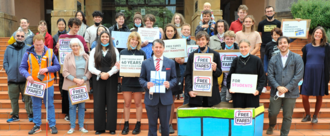
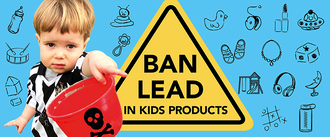
.png)
